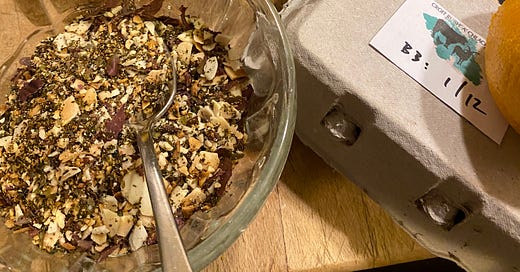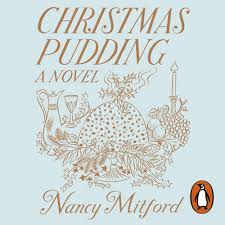I’m editing my next book, slowly. Far too slowly. Fortunately, following the Church’s Liturgical year with its seasons of joy and sorrow, cajoles me along. Today is Stir Up Sunday - a time to edit my Christmas pudding recipe.
I am an avid listener of BBC Radio 4 and a huge Paddy O’Connell fan. This morning, on Broadcasting House, Paddy asked the question: Christmas cake or Christmas pudding? A young contributor said yes to Christmas cake and no to Christmas pudding. A second newspaper reviewer suggested eating Christmas pudding fried and adorned with Branston pickle on Boxing Day. This one is not to my palate. A fleeting comment to Christianity was made by Paddy when it was suggested that Mary Berry must have been serving the 5,000 (Matt: 14: 15-21) because her Christmas cake recipe serves fifty. A Christmas Feast indeed. Anchovies were also mentioned, but not in a Christmas or Loaves and Fishes context. I am tempted to digress further with a mention of Nancy Mitford’s book Christmas Pudding
but will return to Stir -Up-Sunday.
Christmas Pudding is a relatively new Victorian Christmas tradition. The naming Stir up, we beseech thee, O Lord the wills of thy faithful people’ comes from the Collect in the Book of Common Prayer. It is translated from a Latin collect commencing ‘Excita’, meaning stir up.
Figgy Pudding is an interesting name for a traditionally, bomb-shaped pudding because the recipe rarely contains fig, although the dried fruits will have been well doused with alcohol, usually brandy. The pudding was originally made with beef and mutton mixed with raisins, prunes, alcohol and spices; a sort of meat broth thickened with bread. At some point vegetables, grains, fats, spices and raisins and currants were added. The exact contents varied according to affluence. Poorer families used shavings of suet, grains, pulses and herbs, whilst richer families enjoyed meat and expensive imported fruits. The fruit was not plums. The plum pudding or pottage (boiled in a pot) was packed into the animal stomach and kept for a later feast.
In the carol ‘We Wish you a Merry Christmas’, the Carollers sing ‘Oh, bring us some figgy pudding’, and then almost threateningly, ‘We won’t go until we get some’. It was something carol singers obviously considered worth eating. Figgy pudding demands patience, slow cooking and then a good month of resting for its flavour to mature. Suet is a useful ingredient in that it melts when cooked and thereby ensures that when eaten hot, the pudding is moist. It is worth seeking out a good butcher if you are not a vegetarian. However, suet is high in calories. A post war (01:12:46) article in the British Medical Journal suggests that the average Figgy Pudding calorie intake per person numbers 2750. Consolingly the article states that we should worry not because ‘its sustenance is of the mind not body.’ ‘A particularly fine recipe will be hailed as evidence of an art now lost, like that of colouring mediaeval cathedral glass.’ There is also mention of the delight in finding a dusty cookery book with an egg-stained recipe – a defiant reaction to wartime rationing when carrots were used to pad out ration book hoarded, dried fruits. Traditionally a recipe should include thirteen ingredients to represent Christ and his twelve apostles. As a keen forager I usually try to allow the foraged ingredient to be the star of the show. Less is more. However, on this occasion my recipe is in the more is merrier camp. From quince, Amaretti biscuits to seaweed. Anything within reason goes. This year there is wild bramble cognac and Isle of Skye Brewery ale, too.
I recall stirring the Christmas pudding as a child in a school kitchen. Everyone took their turn and made a wish. Community minded. The stirring recognises the three wise men that travelled from the East to meet Jesus. Coins or fortune tokens may be added. These bring good fortune to those who find them on their pudding plate
.
Preparing the pudding on Stir-Up- Sunday allows time for the pudding to mature and is also a fun and creative way to spend family time in the kitchen. Time in the kitchen stirs up a waterfall of family memories - for a Stirrin’ Sunday read try
. If you are wary of condensation, albeit it Christmas scented, on kitchen windows - the consequence of many hours of Christmas pudding steaming; try cooking the pudding bain marie style (in a tray of water) in a low oven. A slow cooker works well too, as does a pressure cooker (do pop over to the expert ). The nutritional analysis of Christmas pudding may put it in danger of being forbidden fruit, but it is eaten on a feast day, so I say, ‘Bravo Figgy Pudding.’





